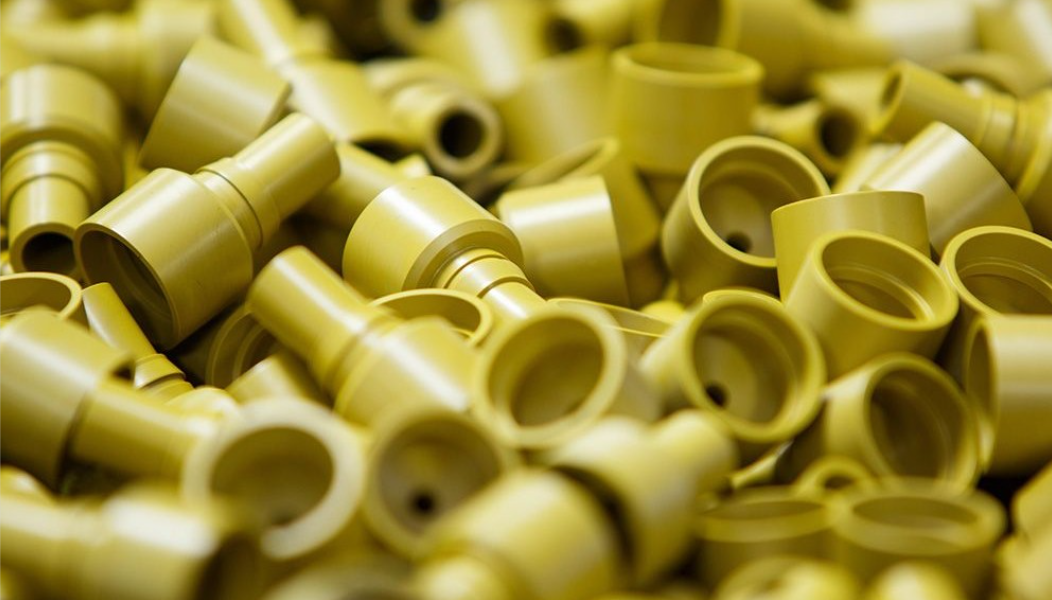ABS is generally also called acrylonitrile butadiene styrene which is formed by the copolymerization of acrylonitrile-butadiene and styrene. Due to the different proportions of these three materials, ABS can have different properties and melting temperatures. If it is mixed with other plastics or additives, ABS can be extended to different use and properties, such as anti-impact grade, heat-resistant grade, flame-retardant grade, transparent grade, enhanced grade, and electroplating grade. The fluidity of ABS is between PS and PC, and its fluidity is related to the injection temperature and pressure, among which the injection pressure has little influence. Therefore, higher injection pressure is often used in molding to reduce the melt viscosity and improve mold filling performance.
- Plastic feature
ABS bibulous rate is about 0.2% 0.8%, the average level of ABS, processing baking in the oven at 80-85 ℃ before 2-4 hours or drying hopper to 80 ℃ baking 1-2 hours. For ABS, PC components in heat level appropriate drying temperature to 100 ℃, the concrete drying time available to empty out. The proportion of recycled materials should not exceed 30%, and electroplated ABS should not use recycled materials.
- Mould and gate design
Mold temperature can be set to 60-65 ℃. The diameter of the runner is 6-8mm and the thickness is the same as that of the product. The gate shall be less than 1mm in length and 3mm in width. The exhaust hole is 4-6mm wide and 0.025-0.05mm thick.
- Melting temperature
Can be determined accurately by the air injection. Different grades of glue also have different temperatures. Suggestions are as follows:
Resistance to impact grade: 220 ℃ to 260 ℃, 250 ℃ is preferred
Electroplating grade: 250 ℃ to 275 ℃, 270 ℃ is preferred
Heat resistant grade: 240 ℃ to 280 ℃, 265 ℃ to 270 ℃ is preferred
Flame retardant grade: 200 ℃ to 240 ℃ to 220 ℃ to 230 ℃ is preferred
Transparent grade: 230 ℃ to 260 ℃, 245 ℃ is preferred
Glass fiber-enhanced grade: 230 ℃ to 270 ℃
For those products with high surface requirements, the use of higher melt temperature and mold temperature.
- Infusion speed
Slow for fire ABS and fast for heat ABS. If the surface of the product is required to be higher, the injection velocity control of high speed and multi-level injection molding should be used.
- Backpressure
Generally speaking, the lower the backpressure is the better. The commonly used back pressure is 5bar, dyeing materials need a higher back pressure to make the color mixture uniform.
- Retention time
ABS in plastic drum residence time can’t be more than 5-6 minutes under the temperature of 265 ℃, flame retardant time shorter. If you need downtime, should first set temperature as low as 100 ℃, clear ABS plastic tube with a general level. After cleaning, the mixture should be placed in cold water to prevent further decomposition. If you need to change from other plastic ABS material, PS, PMMA, or PE to clean the melt cartridge. Some ABS products have no problem when they are just demolding, and they will change color after a period of time, which may be caused by overheating or the plastic staying too long in the melting tube.
ABS products may need no surface treatment, plating grade products subject to bake (70-80 ℃, 2-4 hours) in passivation surface traces, and electroplating products cannot use mold release agents, products out immediately after packaging. There are several grades of ABS (especially flame retardant), which have strong adhesion to the surface of the screw after plasticization and will decompose after a long time. This time it is necessary to homogenize the screw section and compress and pull out the friction test, and regularly clean the screw with PS, etc.





